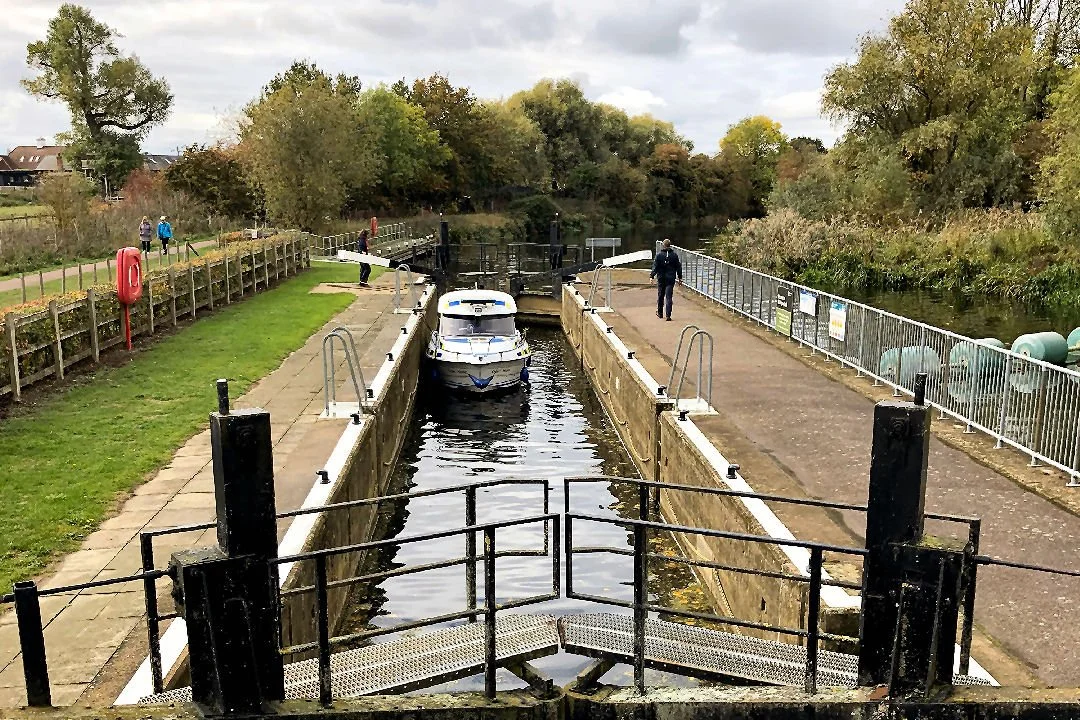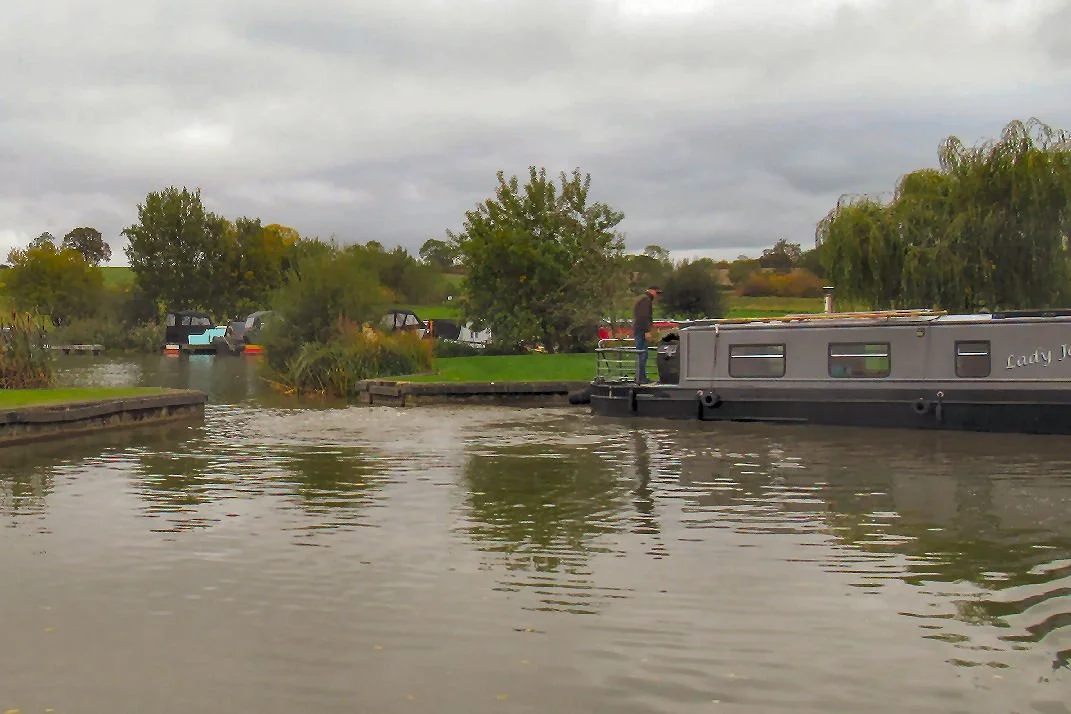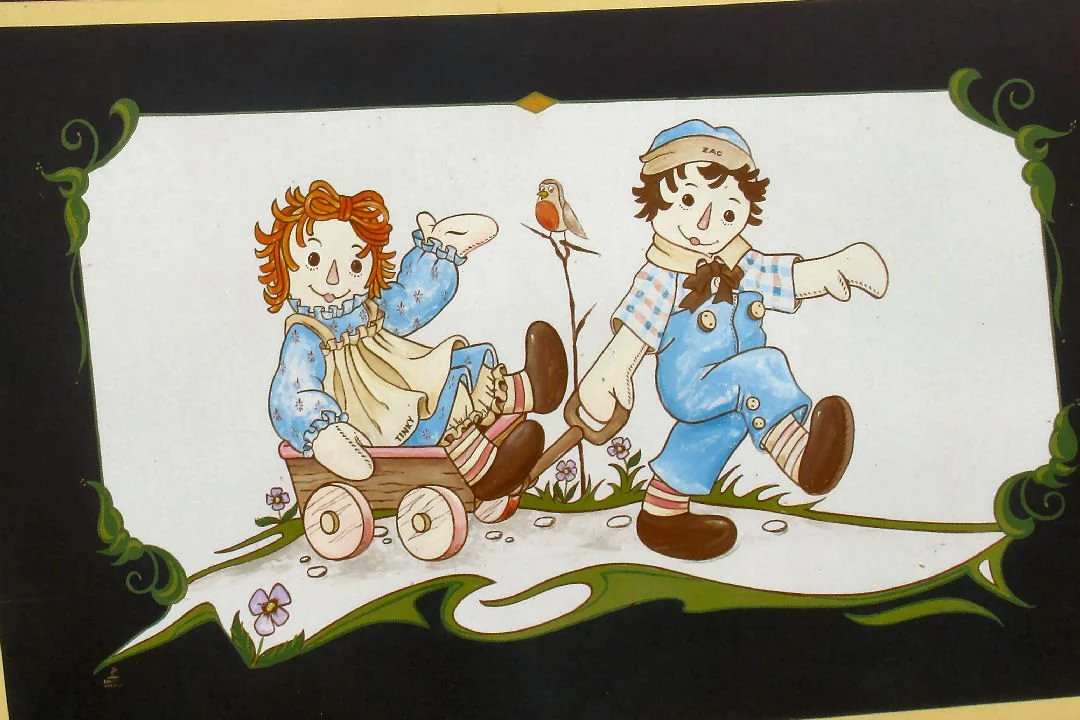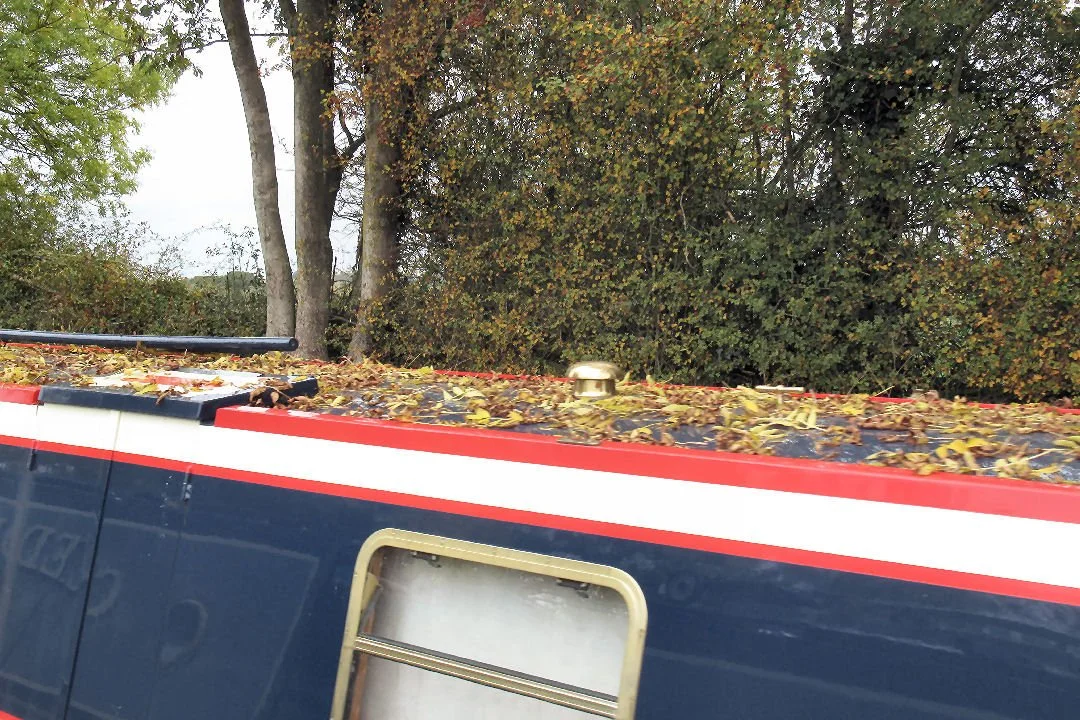Boating in an autumn landscape
There’s always a draw to walk beside water…
“Which way shall we go?” was the conversational starter between Boatwif and a group of walking friends one morning in early October. The group had convened in the car park at Danish Camp, not far from Bedford, close to the River Great Ouse.
One of the walkers was insistent that there was “a new lake” to be seen. In an area of valley bottom quarrying and aggregate extraction that shouldn’t have been a great surprise – but it was.
A path from Danish Camp*, the riverside log cabin café, follows the route of the former Bedford to Sandy railway line, (a casualty of the 1960s Doctor Beeching Cuts https://en.wikipedia.org/wiki/Beeching_cuts ) and diverts to the river bank about 200 metres before Willington Lock.
Within yards of Willington Lock was a muddy morass.
Where formerly there were acres of Brussel sprouts fields, now earth moving vehicles were crafting water channels, piling up earth banks, feeding fresh soil toppings onto the excavations.
(This site would need to be Google researched once back in front of a computer…)**
Habit dictates that any visit out to Willington Lock requires a clamber up the steps to the bridge above the weir for a good look upstream (just look at that tree trunk caught on the weir)
– and downstream (that silt bank is new, isn’t it…?)
From the weir footbridge a good view of the depth gauge revealed that here, as on the canals, water levels were low too.
And then, how satisfying this was, from upstream a small boat came into view, off-loading two crew at the lock landing.
Four lady gongoozlers (aka Wednesday walkers) stood on the weir bridge, watching every move:
Top gates opened
Boat into lock chamber
Top gates closed and paddles* (*slackers) checked for down positions
Rope from boat secured round lockside bollard
Lock crew moved to bottom gates
Bottom gate paddles wound up
Water level dropped - level equalised with lower river
Boat exited to lock landing
It was pleasing for the Gongoozler Group to observe correct procedures throughout the boat’s transit through the lock…Downstream the boat was heading – towards King’s Lynn, a crew member said, though that journey would take a few days…
The process of seeing a boat worked through a lock had been very satisfying for a land-based Boatwif, her last lock action for the Cleddau crew being 7 weeks earlier on 21st July at Foxton.
**https://www.richardfuller.co.uk/news/richard-visits-willington-lock-quarry (most recent reference to the Quarry industry discovered)
…..
A gap on the calendar was identified as time for a final Leicester Line cruise. After the dry spring and summer seasons water levels were still low; lock closures were still in place, even at Welford where the single lock had been opened, closed, reopened and closed again.
“Just to Welford Junction then, turn round there and pootle back…” was the collaborative decision. So, with a distance of about ten miles out and ten miles back, a grand total of 20 lock-free miles would be Cleddau’s final cruise statistic.
Backing away from the home pontoon
Blazing leaf colour before even reaching the canal
Out on the canal it was a right turn to head north.
Just past the footbridge to Cracks Hill is a winding hole. There was a pause while a blue and grey boat edged its way round to face back north.
Would it be a slow boat to follow?
It wasn’t particularly slow – and eyes were more taken by the cloudy sky and by a different boat manoeuvring at the entrance to Yelvertoft Marina, its water protection planks lifted now.
Onward, under Bridge 18, registering that at Yelvertoft Wharf the rubbish bins have now been removed. In complying with new Government rubbish and recycling regulations Canal and River Trust have reviewed their rubbish disposal sites – and closed several, a move which will inconvenience numerous boaters…
The route is so familiar – and, with boats still summit-trapped, many of those passed were familiar too.
On past the Adult Only Heygates glamping site (no hammock swingers or hot tub bathers on a Monday afternoon…) and under the A14.
Remember how in Spring the hedgerows and trees were veiled in white? Now the trees and hedges are dressed in browns, golds, ochres, greens, bronzes, reds…
Mid-afternoon a peaceful spot for an overnight mooring was identified between Bridges 32 and 33. The boat was hauled forward (“Don’t want crab apples landing on the roof above our heads during the night,” the Captain advised).
Only the sound of a tractor in the distance (seeding fields further along ?) could be heard.
Onwards the next day, (this was a spanking new boat not seen before).
(Here’s hoping every day is a “good day” for the owners…)
To the right (south) are the gently sloping Hemplow Hills. Yellowed fields in August are now brown with green-topped seedlings beginning to sprout through the earth… The canal loops and curves, most bridges being farm bridges giving access between fields.
Around Bridge 37 there are often boats clustered along the towpath. This bridge allows road access between Welford-on-Avon and South Kilworth.
The trees shed their leaves at differing rates – which one dumped its load onto the towpath, creating a thick yellow mat of leaves…?
Under Bridge 41 – and ahead was the Avon Aqueduct, a fine place for a mooring after a turnaround at Welford Junction.
This was not the only sign, for planted into the towpath grass, were temporary paper signs. (Not that you could read the wording from the helm - but you could if you stood on the towpath!) The signs warned of Welford Lock’s re-opening, though for how long wasn’t specified.
Cleddau’s outbound destination had been reached; she was turned and tied up facing south on the Aqueduct.
Right beside the gate she was,
down which you can climb 43 steps for a viewpoint over a dribble of water snaking through a grassy channel. Here the Warwickshire Avon is 6¼ miles into its 50 odd mile journey to Stratford-upon-Avon where it becomes navigable by boat (and is 85 miles in total to where it joins the River Severn).
Juvenile River Avon
The peace of the afternoon was disturbed only by the regular bellowing from a cow down by the river.
There were plenty of cows on both sides of the river and in a field on the opposite side of the canal. No other cows, though, took up the call to join a bovine chorus.
Occasionally there’d be a shriek from a heron as it took off from the towpath or a low tree branch to search for its supper. Also looking for food was a sole swan, a youngster, still with a show of grey-brown downy feathers. In hope it hovered near the bow before devouring eagerly the few breadcrumbs left at the bottom of a sliced bread packet.
A late afternoon stroll: watch your feet
– and watch your head
when taking a towpath walk in mid-October.
Never noticed before was another Living Milestone, this one Number 8. The original planted milestone trees were elms, planted to help working boatmen judge distances from the bottom of Foxton Locks.
Heading back south towards Crick next day tell-tale signs of an angling competition were still visible.
Under the A14…
There were flashes of blue in the hedgerows – sloes? Wild plums?
A mooring near Bridge 27 (a favourite spot) gives easy access to Mountain Barn Woodland. Remember how in August plums carpeted the ground?
The plums are gone now, but underfoot the ground is covered with crunchy acorns. Autumn fungi and bright green mosses are new visual attractions.
Viewed through a gap in the trees Cleddau looked boldly blue against a palette of greens and yellows, browns and bronzes.
And so back to Crick, taking in familiar sightings of a panel picture on nb Lazy Daizy,
of leaf-covered boats,
of stunning colours,
a tidy haystack,
a ladder ready for picking the last apples
and always near Yelvertoft the perpetual pondering – ‘What was this structure here?’
By noon Cleddau and crew had arrived back at the marina.
At the service wharf the fuel tank was topped up, then the boat reversed into her mooring, the cabin top and gunwales swept clear of leaves, the mains electric re-connected, the water tank emptied, the gas turned off.
Now Cleddau was very nearly ready to be tucked up for winter…
Miles: 20; locks 0
2025 totals: Miles: 217½; locks 114; swing bridges 8; tunnels: 18















































